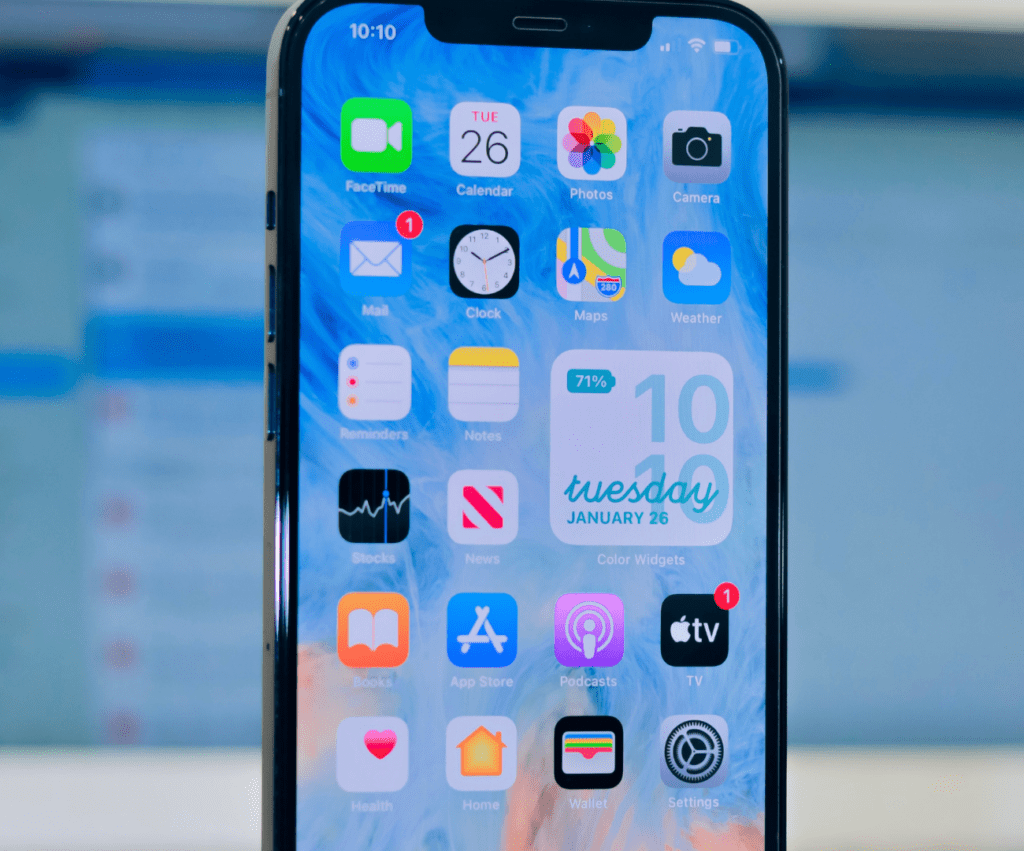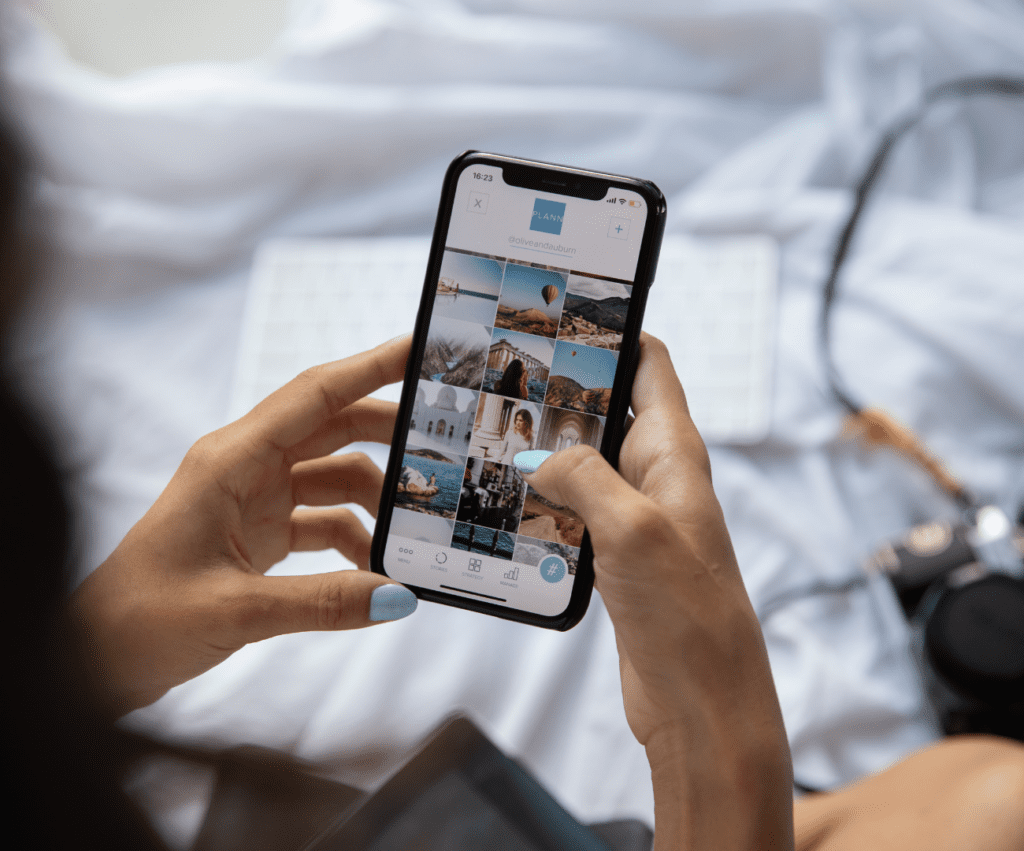Owing to the insane upward spike in the way typical mobile app design is perceived and implemented, the app development infrastructure has changed.
And that’s something good.
Traditional ways to design mobile applications have been replaced with modern-day apps, bloated UI has transitioned to minimalistic mobile app design, and vice versa.
That being said, mobile app designers are always looking for creative ways on how to design mobile app. Ideally, the process shouldn’t take long, since it’s a competitive market out there. On top of that, to design mobile applications, the designer needs to have a bunch of reliable tools.
In this post, we’ll talk about the future ended trends for mobile application development, and delve into making a few mobile app design tool recommendations for you to count on. The latter is meant for aspiring UI & UX designers who are sifting through different career pathways at the moment.
Let’s get started.
Interesting Mobile App Design and Mobile Use Statistics
- Last year, i.e. 2022’s mobile app use timeline oversaw 275 billion unique mobile app downloads
- 88% of the users spent time on portable devices, instead of a PC
- As of right now, there are over 5.49 million applications in Google PlayStore and Apple App Store, combined
- The most downloaded app category, as of August 2020, was Games and Accounting, hinting at tons of opportunities for mobile app design aficionados
Mobile App Design Explained for Beginners

Mobile app design is the process of creating a digital product or application which can be accessed and interacted with through a mobile device.
It encompasses all aspects of the user experience, from initial concept to usability testing, optimization, and production. When designing an app, it’s important to consider how people’s needs can best be met by the product or service being offered.
Designers should think carefully about how users will interact with the interface, features, and data within the app to create a successful product that meets their needs.
In that order, when designers are figuring out ways how to design mobile apps, they must also consider factors such as device compatibility and usability before releasing any product for public consumption.
As we delve further into this post, you’ll better understand different aspects of the ‘design mobile applications’ analogy.
Which Platform Is Perfect for Mobile App Design In The Year 2023?

The best application for mobile app design depends on the specific project, as well as the individual preferences of the designer.
Adobe Photoshop, Sketch, and Figma are all popular examples for anyone contemplating designing mobile applications.
All three tools have advantages when it comes to mobile app design; however, certain features may make one more suitable than others depending on the nature of the project.
Starting off with Adobe Photoshop is a comprehensive image editing platform designed for digital workflows. It has an impressive selection of tools such as layer masking and smart objects for manipulating images.
For you to design mobile applications and complete projects that require high-end graphic skills or photorealistic effects, Photoshop offers unmatched power and flexibility.
However, it takes time to learn some of its more intricate functions making it better suited for experienced users with substantial knowledge of digital art or image manipulation techniques.
Moving on, we’ve got Sketch. It is a powerful vector graphics editor known for its professional-level customizability and reliability when creating user interface elements such as buttons or navigation bars.
Its extensive library of UI components allows designers to quickly create prototypes without using too much code so they can refine their designs before development begins in earnest.
The low learning curve makes Sketch perfect for novice mobile app developers looking to produce basic designs efficiently.
Figma is a web-based collaborative platform that facilitates rapid prototyping with real-time collaboration capabilities across teams from anywhere in the world.
It means that this platform is not only used by mobile app designers but also by web content designers, website designers, and vice versa – the list could go on.
This makes it ideal for working on larger projects involving multiple people since everyone can simultaneously update a single file without having to wait around while changes are made manually by another person’s machine.
Furthermore, its integrated version control system ensures edits are tracked accurately ensuring no one overrides someone else’s work inadvertently. For complex multi-stakeholder projects requiring large-scale changes, Figma could be just what’s needed.
We’d say that the best thing about Figma is the users’ ability to collaborate through online workspaces. Think of it as multiple whiteboards, or a single scrollable whiteboard with the entire timeline for designing mobile applications, so that stakeholders can review stuff and rubber stamp it for approval.
Ultimately, each application has its own strengths which must be considered before selecting one over another to ensure optimal results within the desired timeframe whilst considering financial constraints.
Popular Mobile App Design Trends Expected To Branch Off In 2023 and Beyond

The above three design mobile applications were just the tip of the iceberg.
There are tons of other aspects of mobile app development. Let’s look at some of these trends and see how things will pan out in near future. In other words, it interprets increased job opportunities, career pathways, and business ideas for solopreneurs out there.
- Augmented Reality
The projected future for augmented reality (AR) mobile apps is very promising. As technology advances, these types of applications will become increasingly sophisticated and immersive.
We are already seeing an evolution in AR technology with the introduction of Virtual Reality (VR) headsets that allow users to experience a more realistic view of the world around them.
Meanwhile, smartphone manufacturers are incorporating AR features into their devices which will make it easier for developers to create even more interactive experiences.
With this increased accessibility, businesses can leverage AR capabilities to create unique digital experiences for their customers.
For example, organizations can use AR apps to improve customer service by providing visual instructions on how to assemble new products or showcasing options when selecting items online.
On top of that, hybrid e-commerce companies such as Amazon and eBay are using advanced image recognition algorithms in their apps so customers can easily identify objects just by pointing at them with their phone’s camera.
Architects could benefit from augmented reality room mapping tools that enable them to develop 3D models faster than ever before. As a result, you could be seeing new processes for designing mobile applications that didn’t exist before. The same goes for how users interact with objects in mobile AR environment.
- Mobile IoT (Internet of Things) Apps
As the price of entry into this market reaches its lowest point, more companies are investing in developing mobile IoT applications toward a delightful user experience.
With the increasing level of accessibility to internet-of-things technology, businesses can leverage automated systems from anywhere, allowing them to improve the user experience while gaining insights into how their products are being used.
Furthermore, recent advancements in artificial intelligence capabilities have enabled machines to learn from data gathered through various sources such as cameras, sensors, wearables, or even voice recognition systems which further enhance the usefulness of mobile IoT apps.
The potential applications span almost every sector ranging from healthcare to manufacturing and beyond. As a result, it is expected that we will see significant growth in the mobile app design philosophy.
- Cloud-Based Mobile Apps & SaaS Products
The prediction for cloud-based mobile applications is that they will become increasingly popular in the coming years.
As cloud-based services have become more reliable and accessible, businesses are turning to them to provide mobile applications.
This means users get the latest features with minimal disruption or cost. As these benefits become more widely known and understood by both companies and consumers, demand for cloud-based mobile apps is expected to increase significantly in the future.
The million-dollar question is, where does the mobile app design analogy fit in?
If you have seen some of the latest SaaS product websites or used their respective mobile applications, you’ll realize that they have a very different design aesthetic. It’s something that’s visually immersive and also encourages interaction at so many levels.
The reason why all these companies are racing to ensure that their app design environment is flawless because they wish to grow business volume, alongside the overall growth in a cloud-based infrastructure.
Mobile Interface Design Trends In 2023
Mobile interface design trends are ever evolving, 2023 brings forth a fresh wave of evolution.
This year, with technological strides and shifts in user habits, designers find themselves at the forefront of new design trends. It’s vital to grasp these to craft compelling mobile experiences.
1. Streamlined Simplicity
In 2023, the mantra is “less is more”. This is reflected in the mobile app UI designs.
Designs will focus on simplicity, removing any unnecessary clutter to enhance user experience. This means smoother navigation and higher engagement.
2. 3D Graphics
In 2023, 3D graphics are taking the spotlight in mobile app design. This trend is gradually replacing the flat design style of the past decade.
Users appreciate the depth and interactivity that 3D brings to their screens. It enhances navigation and overall user experience.
What’s even better is that modern devices handle 3D graphics with ease.
3. Vivid Colors and Gradients
Expect a burst of bold colors and gradients in 2023. They add depth and texture, ensuring your app stands out visually and stays memorable.
4. Enduring Dark Mode
When it comes to mobile app UI designs, the dark mode remains a user favorite. It reduces strain and saves battery life. Plus, it’s a powerful way to make your app visually distinctive.
5. Animated Delights
Animations and microinteractions inject delight and surprise into the user experience. 2023 will see more of these, creating engaging and unforgettable interactions.
6. Tailored Personalization
Apps will become even more attuned to individual users. Customized content, recommendations, and notifications will be the norm, offering a highly engaging experience.
7. Organic Shapes and Warmth
Sharp angles are making way for softer, warmer organic shapes. They bring a welcoming touch to app interfaces, particularly vital for sensitive topics. This design choice enhances the app’s flow, making it more user-friendly.
8. Striking Typography
Typography takes center stage in 2023. Expect bold fonts, unique choices, and creative use of color and space to make text pop. This not only guides users but also infuses personality into the app, making it more memorable.
9. Abstract Geometry
In recent years, simplicity has ruled the mobile app design landscape with its focus on minimalism, employing flat designs and basic geometric shapes.
The standout shift is towards abstract geometry, departing from elementary shapes to forge something distinctive and brand-defining.
This trend promises to dominate the mobile app design scene in the coming year.
10. More Shadows and Gradients
In 2023, mobile app UI design is seeing a surge in gradient backgrounds. This trend, borrowed from web design, adds depth, motion, and highlights specific elements on the screen.
Furthermore, shadows are gaining traction in app design. They create a 3D illusion, lending weight and tangibility to UI elements like buttons and cards.
This trend is about adding depth and realism to the app’s visual elements.
Wearable Tech’s Impact on Mobile App Design Norms
Wearable tech is a technology that can be worn on the body, often as an accessory item, such as a watch or fitness band. It is typically connected to other electronic devices and uses sensors to collect data about its wearer’s activities and environment.
Wearable devices are increasingly being used by businesses as an alternative to hand-held computing devices, with applications ranging from health and fitness tracking to professional communication.
The impact of this new form factor on mobile app design norms has been far-reaching. Wearables offer developers a whole new range of capabilities when compared to traditional smartphones, tablets, or computers; some features are exclusive to wearables only due to their physical nature.
For example, many wearable apps can track and detect changes in heart rate or body temperature without requiring user input—a feature that could be difficult for some users using standard device inputs like a finger or voice activation commands.
Similarly, vibration motors embedded into wearable accessories allow developers greater flexibility in delivering notifications or providing feedback regarding user actions—an ability that can prove extremely helpful with certain types of tasks like navigation directions via haptic prompts.
4 Best Mobile App Design Tools in 2023
1. Adobe XD:
Adobe XD is a powerful tool for designing and prototyping mobile apps. It offers fast and innovative tools that allow designers to create seamless user experiences.
With over 250 plugins, it supercharges the design process. The drag-and-drop functionality quickly transforms wireframes into interactive prototypes.
It’s also great for collaborative projects, enabling secure sharing with the team.
2. Marvel:
Marvel is a top mobile app design tool for 2023. It simplifies the process by consolidating image elements in one place, eliminating the need for complex programs.
It’s favored by many app development companies, especially for Apple App Store designs.
Marvel is compatible with various Apple devices and allows for prototype creation for Android. It offers easy navigation and organization.
3. Figma:
Figma is the world’s first collaborative interface design tool. It’s known for real-time, centralized digital experiences, making design and prototyping efficient.
It has seen a significant increase in popularity, from 8 percent in 2017 to 57 percent in 2020.
Figma enables the creation of design systems with linked UI components and facilitates turning visual concepts into code for easy scaling.
4. 3Ds Max:
3Ds Max is an innovative tool for creating impressive 3D animations and high-quality 3D models.
It’s ideal for modern app designers, supporting UX/UI design, rendering animations, 3D modeling, and game design visualization. While it may be pricier, its functionalities are exceptional.
Conclusion
Mobile app design is a vast field with a multitude of opportunities. As far as platforms for development are concerned, none of them could be dubbed as the “ultimate” tool, or the only software as a one-off solution for everything.
Feel free to compare different software on how to design mobile apps and match them against your individual vs. business requirements. From then on, try the program on a trial basis – i.e., if the vendor is offering a free evaluation package. Lest you wouldn’t be paying upfront for a program that is too simple, or too complex for you to design your mobile applications.
As we look ahead, it’s clear that staying attuned to these mobile app design trends will be paramount for creating applications that resonate with users in an ever-evolving digital landscape. Adapting to emerging technologies and user preferences will be the cornerstone of success in this dynamic field.
FAQs
Which mistakes should be avoided when designing mobile applications?
1. Not Understanding Your Target Audience – Before designing your app, it’s important to have a firm grasp on who will be using it. Knowing their expectations, needs, likes/dislikes, as well as any existing habits or behaviors that may be relevant can help you make more informed decisions throughout the process.
2. Not Considering Mobile Platform Specificities – When planning out your interface layout and features, bear in mind that the user experience will differ on each platform (iOS vs Android).
Factors such as screen size & resolution variations must also factor into how you implement various components within your application’s UI/UX.
3. Ignoring Responsive Design Principles – As mobile devices become increasingly versatile with larger screens or different form factors like tablets or smartwatches; users expect all apps they install on any device to behave correctly.
4. Failing To Consider Performance Optimization – Apps that take too long to load or don’t respond quickly enough tend to get dropped very quickly by users who expect instant gratification from their digital products these days!
Make sure you pay close attention throughout every stage of development for performance optimization – especially for large data sets which could slow down page loads significantly if not addressed properly beforehand!
Android vs iOS – Which platform is best for mobile app design?
Android and iOS are the two most popular mobile operating systems on the market, used by millions of people worldwide to access apps, games, and more.
In terms of mobile app design, both Android and iOS offer unique advantages and disadvantages that must be considered when making a decision on which platform is best for your needs.
In terms of reachability, Android offers much wider app availability than iOS.
With a vast majority (87%) of the global smartphone market share running Android compared to Apple’s 12%, it’s clear that there are more users with access to an Android device than an iOS device.
In terms of development time and cost, developing for iOS can typically be quicker and less expensive than doing so for Android due to Apple’s strict App Store guidelines versus Google Play’s wider set of restrictions.
Coding in Swift (Apple’s programming language) tends to be simpler and easier to learn than Java or Kotlin (commonly used programming languages for coding in Android).
Design-wise, when people are looking to create a remarkable user experience (UX), both platforms offer high levels of performance. But these platforms require different strategies when designing an interface – especially in regard to visuals such as iconography and font selections.
For instance, while Apple leans towards the use of skeuomorphic UI elements inside their apps; Google allows more freedom with its Material Design framework allowing designers to create whatever they desire within several parameters provided by Google itself.
At the end of the day deciding whether you should develop your mobile application for either platform or even both depends on your goals – including budget constraints, timescales, etc.


